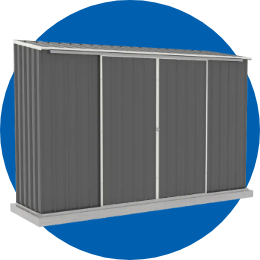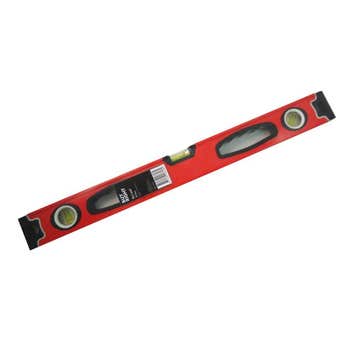- 11 November 2023
Lay your own concrete and get a 10/10 result – with a little help from Mitre 10.
Concrete is one of the most versatile building materials. It lends itself well to a wide variety of shapes and forms. You can use it to create a family entertainment centre, build a patio, garden path or driveway, or provide a hard and durable floor that will last a lifetime in your garage, workshop or garden shed. There’s no need to hide behind the excuse that you’ve never concreted anything before either – concrete is also one of the easiest building materials to work with. The techniques for laying anything from a shed floor to a garden path are much the same, once you know the basic rules for mixing up the ingredients, making formwork, laying and levelling. And in this MitrePlan Project Planner, we provide you with the know-how. Just follow the step-by-step instructions and you’ll find working with concrete relatively simple. All you need are the right tools and the right materials from your Mitre I0 specialist – and you’re on your way.
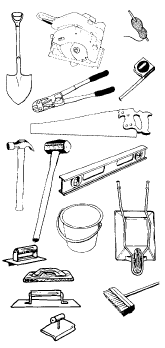

Understanding Concrete Mixes
Concrete is made by mixing cement, sand, stone, aggregate, and water. For small jobs, it's best to buy pre-mixed concrete in 40kg bags and simply add water. For larger projects, buying the materials separately and mixing them yourself is more cost-effective. Cement is typically sold in 40kg bags, while sand and aggregate are available by the cubic metre or in fractions thereof. The mix you choose depends on your project:
- Mix A: Suitable for minimum 100mm thickness, ideal for driveways, garage and workshop floors.
- Mix B: For light duty strips and bases up to 75mm thick, such as garden paths.
- Mix C: For areas where high strength isn't crucial, like garden wall foundations or bedding in slabs.
To calculate the volume needed, multiply the area's length by its width by the required thickness. For each cubic metre of driveway concrete, you will need 8 x 40kg bags of cement, 1/2 cubic metre of concrete sand, and 3/4 cubic metres of 20mm aggregate.
Step 1: Plan ahead
Unlike most building materials concrete is hard to fix if you make a mistake. So plan your job carefully. Make a sketch of it if necessary. What you are concreting is also an important consideration. For example, you may want to use ready-mixed concrete it you are laying a large driveway or garage floor. This is delivered in bulk by large trucks, so you must have formwork in place and a couple of helpers ready to off-load it. It is also sensible to check with your local authority before starting about any regulations or restrictions, particularly in relation to existing drains or pipe runs.
Step 2: Buying your materials
Concrete is made by mixing cement, sand, stone, aggregate and water. For small jobs, it’s best to buy pre-mixed concrete in 40kg bags. Then all you do is add water. For larger projects, it’s cheaper to buy the materials separately and mix them yourself. Cement is normally sold in 40kg bags. Sand and aggregate are both sold by the cubic metre or fractions of a metre in 1/4 cubic metre multiples. There are various concrete mixes depending on your project. Here are some of the most common mixes: A) Suitable where a minimum thickness of 100mm is needed, such as driveways, garage and workshop floors. B) For light duty strips and bases up to 75mm thick, such as garden paths. C) Where great strength is not needed, such as garden wall foundations, bedding in slabs. To calculate the volume of cement and aggregates needed, multiply the area’s length by its width by the required thickness of concrete. This will give you the number of cubic metres you are concreting. For each cubic metre of driveway concrete you will need 8 x 40kg bags of cement, 1/2 cubic metre of concrete sand and 3/4 cubic metres of 20mm aggregate (screenings). Use this guide to estimate your quantities.
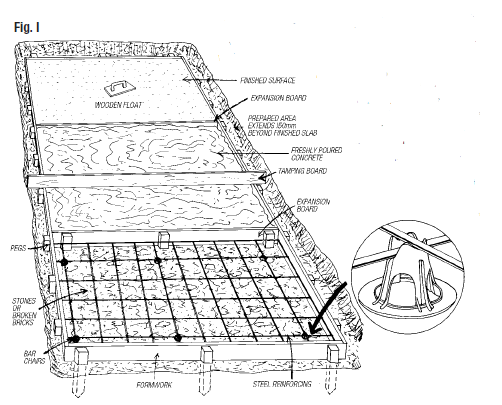

Step 3: Preparation
First, measure and mark out the area to be concreted. Stretch stringline between pegs driven into the ground, then remove the top soil until you’ve accurately marked out the shape of the area. Use a builder’s square to set the corners accurately. Then dig down to the depth you want the concrete. The prepared area should extend about 150mm behind the edge of the finished slab so there is space for preparing the formwork (Fig 1.). Be sure the ground is firm, level and free from vegetation. If it is soft and loose, add a layer of stones or broken bricks and tightly compact into the surface with a sledge hammer. If laying immediately over an old concrete base, completely break up the old first and compact it or your new concrete will crack.
Step 4: Fixing the formwork
This is a kind of box that keeps the concrete in place while it hardens and provides an edge for levelling the poured concrete. Hammer in pegs at Im intervals around the outside of the entire area. Place the formwork boards against the pegs using your stringline to accurately align them. Use a spirit level to ensure the tops will be flushed with the finished level of your concrete. If required, check that the formwork is slightly lower on one side so rainwater can run off. If near a home, slope away from the house. Then nail the boards to the pegs making sure there are no gaps between two boards or between the boards and ground where concrete can seep through. Finally, to help prevent your concrete cracking from earth movement, tree roots and usage, add steel reinforcing. This is essential to increase strength. With bolt cutters, cut your reinforcing mesh 50mm less than the distance between the formwork to protect it from rusting. Also ensure there is a 50mm gap between the edge of mesh and expansion joint. Then place it inside the formwork supported off the ground on bar chairs suitable for the thickness of the concrete (refer to “Your Materials Checklist”).
Step 5: Mixing the concrete
At this stage, you should also consider adding a colouring agent to your mix. Liquid and powder forms are available in a range of earthy colours to highlight the overall design of your path or driveway. Hand mixing: The cheapest method when the quantity of concrete required is not too large. Mix on a smooth, clean surface such as an old sheet of board – never on dirt. Using a bucket, measure out the correct amounts of each material into a pile. You can double up quantities if you like, but mix only what can be used immediately. With a shovel, turn the pile over several times until it is a uniform colour with no patches of cement or sand. Make a well in the middle of the pile and add a little water. Push in the mix around the edges into the water until the water has been absorbed (Fig. 3). Then turn the mix over until it is evenly moist, form a new well in the middle and add more water. Continue doing this until you have a workable mix. Power mixer: These can be hired for any reasonable sized job and will save you a great deal of time and effort. First, with the mixer running, add the aggregate into the drum. Then add the sand and cement and let these mix thoroughly. After a minute or so, add some water and let it mix in for 2 – 3 minutes. After checking, add just enough water to make a workable mix. Once this is obtained, mix for another minute. Be sure to clean the drum with water after each mix. When you’re finished for the day or the job, leave the mixer running and add some water and aggregate to clean out the drum. Ready-mixed: For large projects of 11/2 cubic metres or more. All you have to do is tell the concrete supply company the size of the area you are concreting and they’ll calculate the amount needed and the cost. Some even have smaller trucks that can drive right into your garden. But remember, be prepared to lay it fast if the concrete can’t be tipped directly into your formwork. Have plenty of helpers with heavy duty wheelbarrows (you can hire these too) standing by.
Step 6: Laying and Levelling
Pour the mixed concrete into the formwork spreading evenly with a rake or shovel (Fig. 4). Make sure the corners and edges are well filled with no air gaps, and that the reinforcing is fully covered – any exposed steel could rust and deteriorate, weakening your slab over time. The concrete should be slightly higher than the sides of the formwork. Concrete slabs shouldn’t be more than 3 metres in any direction without a joint to control cracking. The simplest way is to include a 5mm thick piece of softwood or bituminous stripping (plastic and rubber are also available) the same depth as the concrete as you’re laying it (Fig. 5). It acts as an expansion joint and remains embedded in the concrete. To level the surface, lay the tamping board across the concrete at one end and resting on the formwork. Move the board to and fro in a sawing action to level the concrete, filling in with more or scraping off excess as necessary (Fig. 6). Then use a firm tapping action, moving the tamper forward by half its width each time to compact it.
Step 7: Finishing touches
After tamping, the surface is usually suitable for most driveways or paths with a slightly ridged non-slip finish. Or, draw a stiff-bristled broom gently across the concrete to create a non-slip pattern of straight lines (Fig. 7). One of the simplest ways to finish is to run the back of your shovel over the wet concrete, producing a fine swirling pattern. If a smoother finish is preferred, use a wooden float. Press the float down firmly and ‘scrub’ with a circular action. Then allow the water in the concrete to rise to the surface. Don’t scoop or brush this water off. Let it disappear and then finish off with the wooden float. For a smoother, polished finish, use a steel float at a slight angle towards you with a sweeping semi-circular action. Next, slightly round the edges with an edging tool to prevent chipping and give your job a more professional look (Fig. 8). Finally, allow the concrete to cure. Cover it with damp sacking and regularly keep it moist, or use plastic sheeting. Keep it covered seven days – more in cold weather. Now all that’s left is to remove the formwork – and admire a job well done.
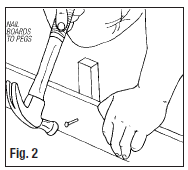

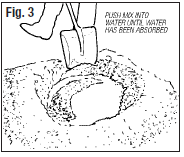

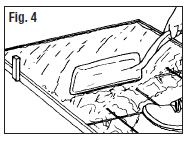

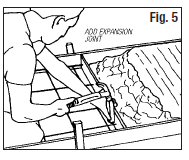

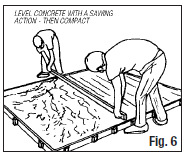

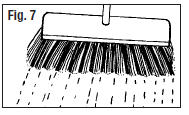

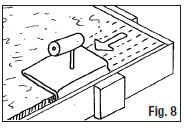

Maintenance and Aftercare
Laying a concrete slab might seem daunting, but with the right tools, preparation, and technique, you can achieve excellent results. Remember, practice makes perfect, and every project is a learning opportunity.
Enjoyed our content? Let Mitre 10 be your companion for the next project. Dive into our range of expert advice and resources today.








